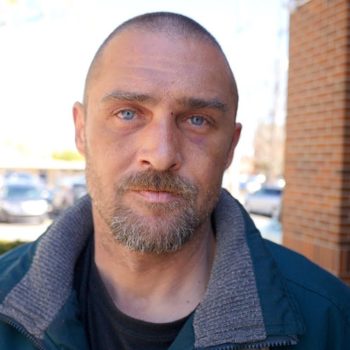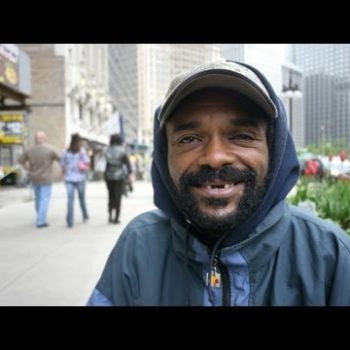Preventing Poor Outcomes is Possible Through Preventative Treatment
As instances of both severe mental illness and deadly police violence are on the rise, activists in cities across the nation are challenging the systems that put people with unmet mental health needs in close contact with people who have more weapons than sense.
This is lifesaving work because people who are perceived as being amid a mental health crisis account for 25% of all police killings, and improving mental health care can lead to positive impacts in all areas of life, making happier people, thriving communities, and even preventing homelessness.
The Treatment Not Trauma program in Chicago focuses on reducing this statistic by reducing the number of overall encounters between people with serious mental illnesses and the police. Their innovative approach offers an effective blueprint and path forward for other cities that want to accomplish the same thing.
What Is Treatment Not Trauma?
Treatment Not Trauma is a bottom-up approach to public health care that doesn’t take mental health crises for granted. Instead, it seeks to build a system that prevents people from getting to a crisis point altogether.
In that fundamental way, it’s different from other efforts that seek to eliminate police involvement in mental health crisis calls by instead sending trained mental health responders. Those programs save lives and offer several other great benefits to communities implementing them.
But Treatment Not Trauma strives to take the idea even further, seeking to prevent the need for mental health crisis intervention teams entirely by preventing mental health crises.
How Does That Work?
The Treatment Not Trauma program is designed to function in three parts. The first is indeed to replace police intervention in mental health crises with a non-police mobile crisis response system that can operate throughout the city. This reduces harm while the whole system gets up and running and helps to catch any people who may fall through the cracks later on.
While this is where many other programs stop, it’s only step one in the plan for Treatment Not Trauma. Step two is reopening the mental health care facilities operated by the Chicago Department of Public Health until the 1990s.
These facilities will have a dual function as both stabilization and reception centers for people in their times of crisis and also fully integrated community spaces offering preventative outreach and everyday supportive services. All members of the community will be able to benefit from these hubs, not just those on the verge of a mental health crisis.
Step three involves forming a community care worker corps made up of regular residents from the neighborhoods of Chicago with the greatest unmet social, medical, and economic needs.
People filling these roles need no existing mental health training- they will be trained by the Chicago Department of Public Health and employed as peer support specialists who work in conjunction with mental health professionals to ensure that their neighbors’ unique needs are being met.
The participation of the people bucks the typical trend of paternalistic mental health care and instead offers involvement for all. Prioritizing local knowledge and lived experiences leads to greater trust and better outcomes for everyone, and members of this community care worker corps are paid well to provide it.
Why Should We Bother?
Current systems of mental health care are flawed. Not only are they often inaccessible for those who could most benefit from them, but they also tend to have blindspots and barriers that prevent care from being equally effective for all people.
Top-down approaches to mental health have historically been paternalistic, needlessly narrow-minded, and even counterproductive to people who fall outside the target audience of white, middle-class men and occasionally their white, middle-class wives.
Barriers to becoming a mental health professional at every step of the way, from admission to education, paying for licensure, and securing employment, make it so that providers of mental health care themselves look more or less like that target audience with few exceptions. This can lead to a significant mismatch between mental health professionals and the people they serve from different backgrounds. The resulting blindspots negatively impact the efficacy of their care and treatment.
The community care worker model tears down those barriers to entry and allows everyday people to materially participate in the improved health of their communities while at the same time providing mental health care providers direct access to the culturally specific context they didn’t even know they were missing.
This makes treatment more effective and reduces collateral damage caused by uninformed interventions. It also fosters an environment in which all people work together to improve conditions for the communities they are part of, rather than being given impractical instructions for improving things that don’t move the needle on the real problem.
Under this model, care is reciprocal, integrated into the community, and provided by people who understand the specific circumstances of your life.
Fiscal Conservatives Rejoice!
The Treatment Not Trauma initiative represents yet another situation in which the most effective solution is also the cheapest!
The reduction of crisis-level situations achieved through this program will offer substantial savings on the $537 million currently being spent across Cook County annually on behavioral health acute inpatient and crisis care system costs. The City of Chicago alone accounts for $279 million of that cost, so even restricting the program to city limits could significantly reduce care costs.
And that’s to say nothing of the savings on police person hours once they’re relieved from duty and replaced with community care workers. Since direct police spending accounts for 35 percent of the city of Chicago’s total annual budget at a whopping $2 billion total, that savings is sure to be significant! And that’s not even touching on the cost of maintaining police assets or paying out settlements for victims of police violence, which taxpayers foot the bill for also.
I can’t think of a worse return on investment than being forced to pay more for worse and worse outcomes. Treatment Not Trauma and programs like it offer the best bang for your buck if you’re all about spending money efficiently.













